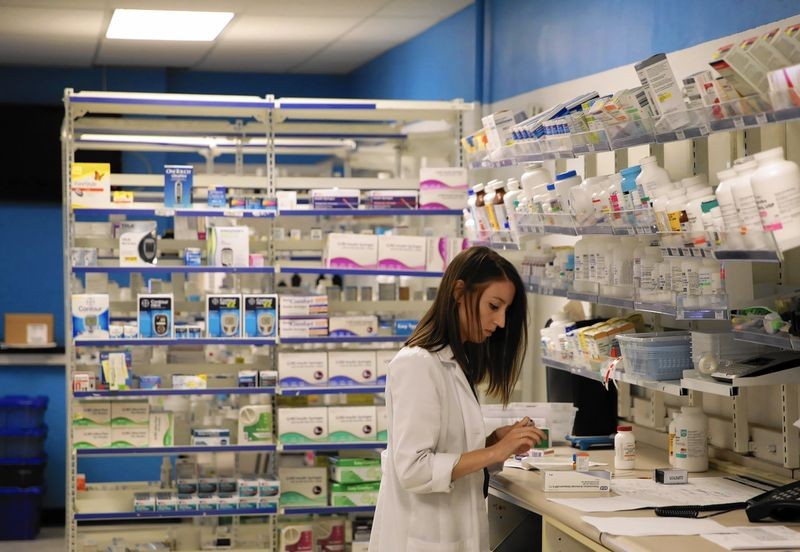
Patients put an enormous amount of faith in pharmacists, landing the profession the fourth highest ranking in Gallup’s 2019 poll of professions Americans consider to be the most honest and ethical.
Despite their obligation to the public and the integral role they play in the care continuum, increasing pressures on pharmacists are compromising the profession’s ability to prioritize patient health.
Industry consolidation, declining drug reimbursement rates, staff reductions and the need to meet corporate-set performance metrics all contribute to pharmacist’s inability to focus on patient care.
With nearly half of all Americans taking at least one prescription medicine and the country’s Medicare population set to balloon to more than 80 million beneficiaries over the next 10 years, the profession is at a crossroads.
Existing technology may be the light at the end of the tunnel.
Changing Landscape
Downward pressures on pharmacies have been mounting for some time, but a New York Times article published earlier this month blew open the door on the severity and scope of the issue, beginning at the top.
The pharmaceutical sector has not escaped massive consolidation that’s swept through the healthcare industry in recent years. Following its acquisition of Aetna in late 2018, CVS propelled itself to category leadership. It’s now responsible for a quarter of prescription revenue in the US. Household names Walmart, Kroger, and Rite Aid also take sizeable slices of the prescription pie. As mentioned in the Times piece, roughly 70% of prescriptions dispensed in the US are from only a handful of chain drugstores, supermarkets, and retailers.
Struggling to maintain hold in an extremely competitive environment, as the cost of prescription drugs has spiked, drug reimbursement rates have decreased, narrowing margins.
Additionally, pharmacies must anticipate and plan for implications the current administration’s acute focus on the high cost consumers pay for prescription medications will have for their business. As the presidential race heats up, it’s fair to assume changes will come sooner than later as the President pushes to make progress on campaign promises and issues of key importance to voters.
Through automation, integration and heightened connectivity, a wealth of newly-available tech is simplifying processes and enhancing pharmacy operations.
Not privy to certain preferred pharmacy networks and drug pricing contracts, and unable to compete with the sheer market power of the few remaining pharmacy behemoths, community pharmacies have shuttered at a startling rate. A University of Illinois Chicago study published in JAMA Internal Medicine last October found of the one in eight US pharmacies that have closed in recent years, a disproportionate number served “urban, low-income neighborhoods.”
Perhaps most alarming is the disproportionate impact industry changes have had on pharmacies serving the uninsured and individuals carrying Medicare and Medicaid. The same study found that pharmacies primarily catering to these populations were twice as likely to shut down. In total, nearly 10,000 total pharmacies ceased their operations between 2015 and 2019.
The government’s focus on reducing prescription costs and new payment models being constructed that tie services provided by pharmacists to patient outcomes will be undercut by limited access to pharmacies for the country’s most vulnerable populations.
Pressure Cooker
A search of the responsibilities of a pharmacist returns a number of expected tasks: reviewing physician orders, packaging, labeling, and reviewing prescriptions for accuracy, and advising patients of potential drug interactions, proper dosage and storage.
However, as pharmacies scrutinize their bottom line, measures taken to save costs have resulted in employees doing more work with fewer resources.
The Times article found modern-day pharmacists forego using the restroom and work through meal breaks and put in extra hours as they “struggle to fill prescriptions, give flu shots, tend the drive-through, answer phones, work the register, counsel patients and call doctors and insurance companies.”
At the same time, pharmacists are being incentivized, sometimes financially, to capture every possible dollar by filling as many prescriptions as possible through urging providers to request orders, providing automatic refills and dispensing greater quantities of medications than requested by physicians.
Pressured to perform as individuals and on the pharmacy and corporation’s behalf, pharmacists are putting patients at risk. Patients who have received and taken incorrect dosages and medications have fallen ill and even died. While recent data on patient harm directly caused by pharmacist dispensing errors isn’t readily available, the FDA reports its agency receives more than 100,000 reports of suspected medication errors annually.
The Power of Tech
Through automation, integration and heightened connectivity, a wealth of newly-available tech is simplifying processes and enhancing pharmacy operations.
Understanding that time is one of pharmacist’s most valuable assets, OrderInsite’s solutions can fully automate prescription drug ordering, resulting in an estimated savings of 30 hours monthly.
As time goes on, pharmacists will further feel the squeeze of needing to do more with less. Identifying and embracing third-party solutions can help ease escalating burdens and will positively impact patient care, costs, and job satisfaction.


